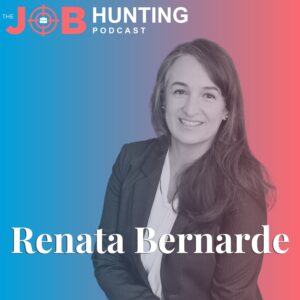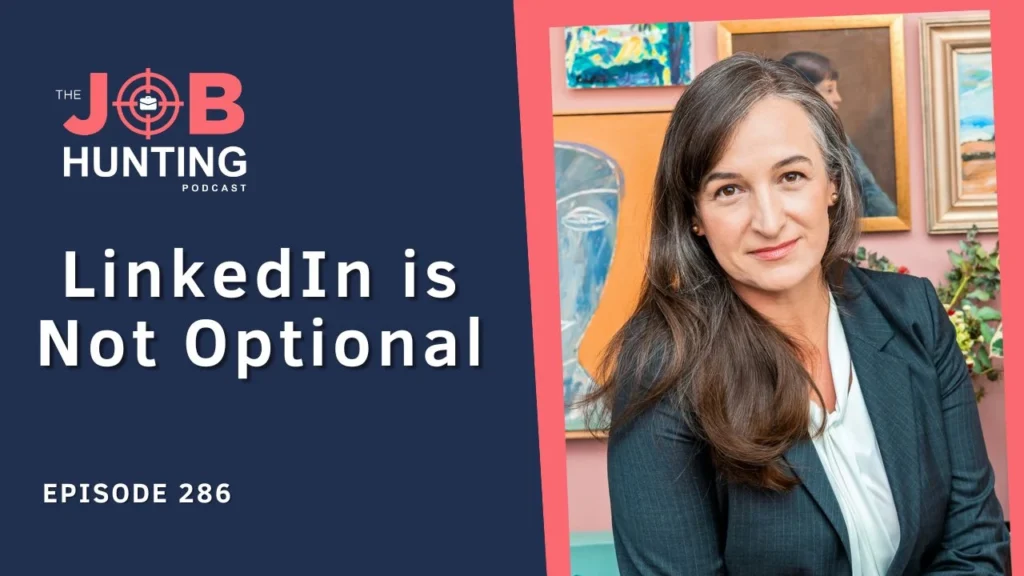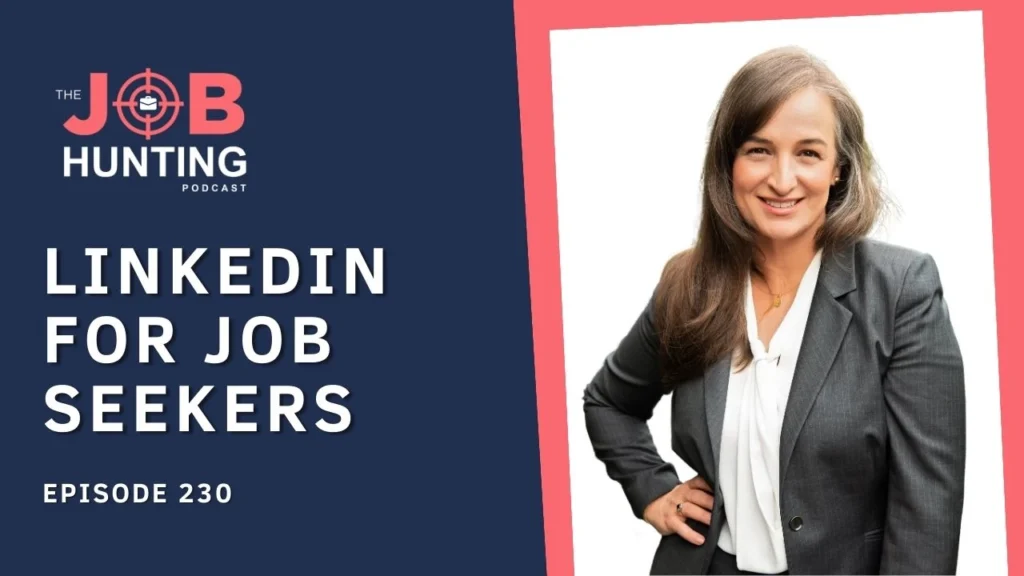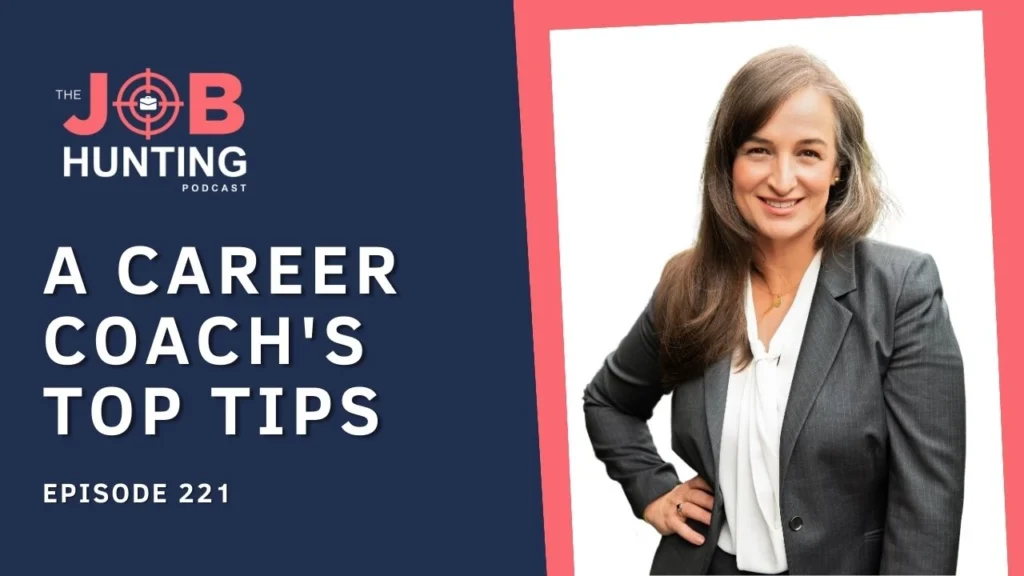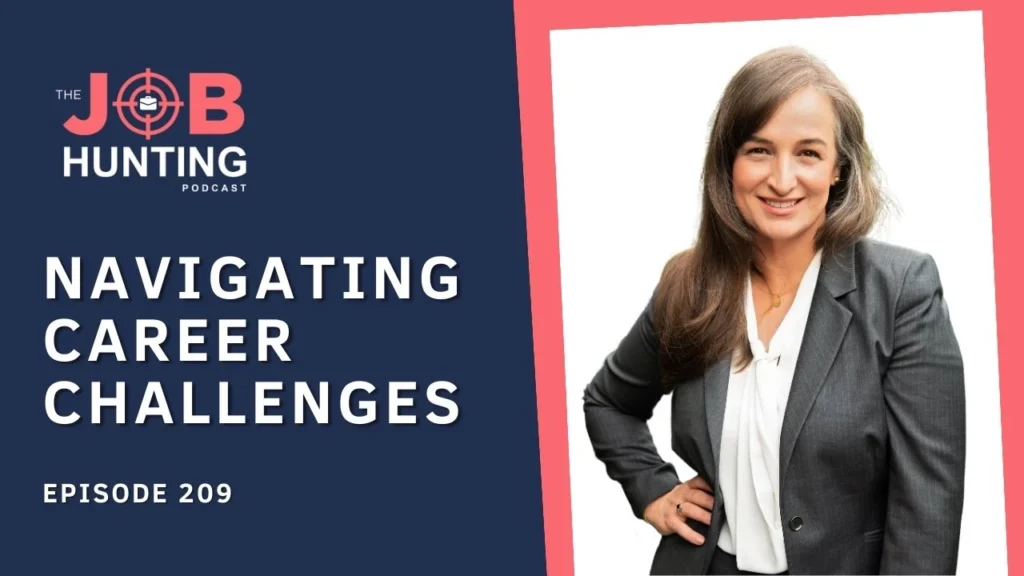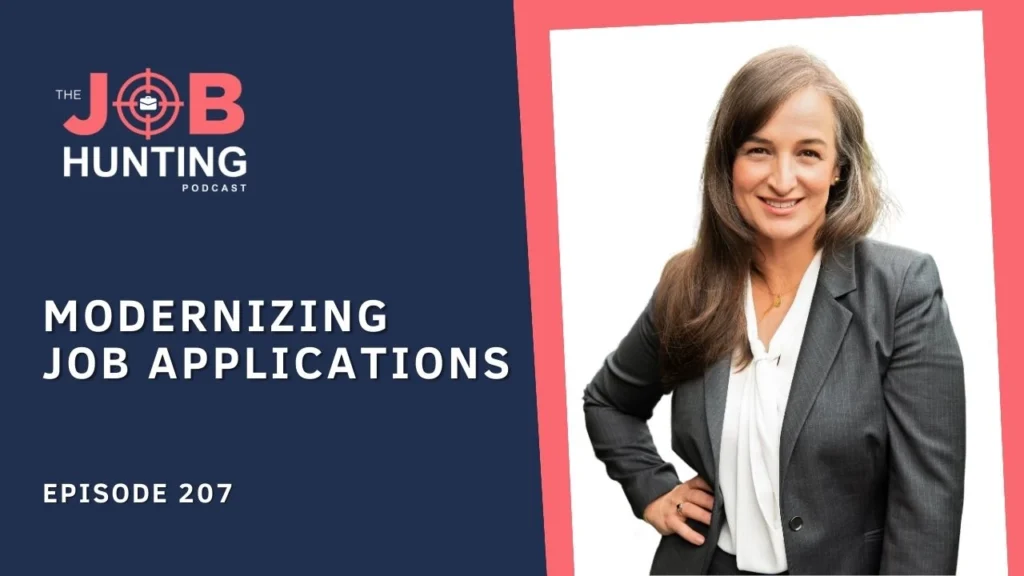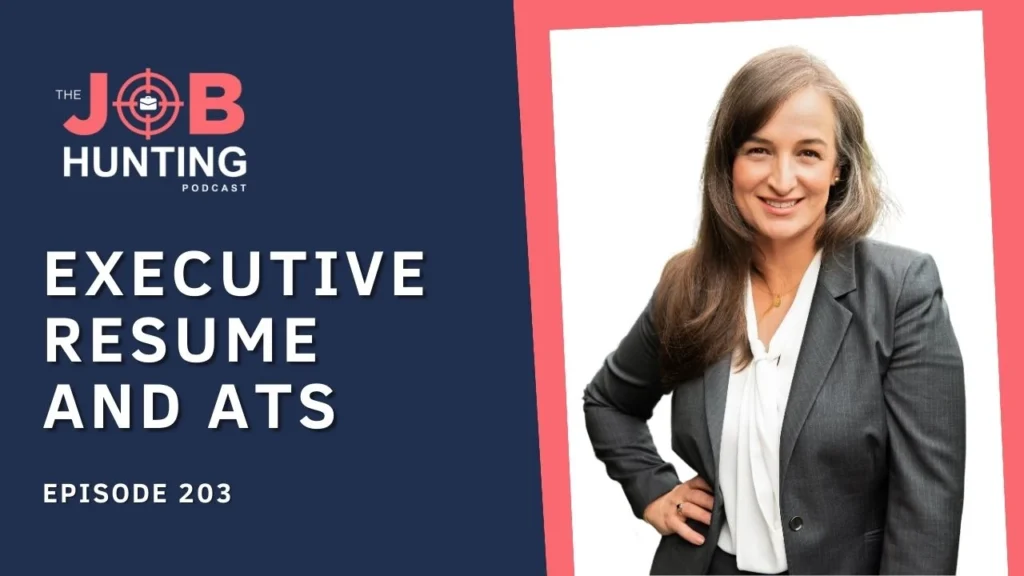In this episode, we are going to be talking about LinkedIn basics. What is LinkedIn for anyway, and why is it different from other social media platforms? What are the other LinkedIn platforms which you may not have access to but are really important for your career? How do you navigate LinkedIn on your own terms, and what is the key etiquette that you need to know when connecting with others on LinkedIn?
And finally, Why should you post on LinkedIn, and what sort of posts you should be posting? Let’s go here.
Before we begin talking about LinkedIn, I just want to take one minute to say thank you so much to everyone that has been listening to this podcast. The Job Hunting podcast has grown exponentially for the past few months, like six months. It’s grown so much. I cannot. Even imagine what it looks like to have people listening to this podcast all over the world.
I never imagined this when I first started, so thank you, thank you, thank you. And if you are new, if you just found this, if you’ve been listening for a few weeks, then please subscribe. I know that a lot of you. Haven’t subscribed yet, and it would mean a lot to us if you subscribe wherever you found this.
If you want to take it a step further, you can sign up for our newsletter so you won’t miss out on any episodes coming up. And I’m also going to send you other important articles and information that will benefit your career. So you can sign up for my newsletter. There’s a link to it in the episode show notes.
But you know, at the least, sign up if you found this on iTunes or if you found this. Spotify, audible, wherever you found this, sign up and subscribe. If you’ve been listening for a while, please give us a five-star rating. It helps us so much to reach out to new listeners all over the world and also to more and more guests that you will benefit from listening to in the future.
So, five-star Rating. Really, really appreciate your help. If we have helped. Any way to advance your career, to improve your job hunting techniques, a five-star rating would be really lovely. Thank you so, so much. And if you have extra time, write as a review. I think Apple Podcast is the only place that you can write reviews.
Maybe Spotify, I’m not sure. But Apple Podcast reviews are really important for us to perform and reach out to new audiences and new guests. So thank you. Now why did I decide to record yet another episode about LinkedIn? First of all, you love the LinkedIn episodes, and if you haven’t had a chance to look at them, I will mention some of them below.
But even if you go to my blog, there’s a category, LinkedIn, and there are lots of episodes under that category, but I think so. Something that’s normal to me and common to me may not be normal and common to you. I can see that as I go through my group coaching program. Job hunting made simple. So right now, we have 22, 22, 23.
I won’t say not really sure how many professionals doing the group coaching program with me. We’re halfway through. We’re in week four, and sometimes. People saying, oh, can you just please explain to me again how to access this and how to disable that or enable this or enable that? And those are important features that if you are using LinkedIn for job search for.
You know, together intelligence about the job market and other opportunities out there for your career. You need to get these basics done, and I want you to know what the basics are. So this is LinkedIn one-on-one, everybody. If you are more advanced, maybe listen to this as a refresher just to make sure that you’ve ticked all the boxes.
But of course, you will even find My previous episodes are LinkedIn, probably have more advanced ideas, and you know, if you’ve worked with me as a client, you know that we take it to another level behind the firewall of my coaching services. So, first of all, what is LinkedIn for? A lot of people are so reluctant to join LinkedIn or to use LinkedIn. Frankly, if you are in, you know, big countries working in the corporate sector, nonprofit or even government, and if you are in English-speaking countries, but also in Southeast Asia.
All the Americas, every European country, not say, of course, my home country. I’m in Australia. There is really little chance of your career progressing and advancing without LinkedIn, especially in this hybrid wor world where we are all working remotely. Not coming to the office as much as we did in the past.
LinkedIn is where we connect. So LinkedIn for connecting to keep in touch with your former employees and colleagues, your current employees and colleagues, everybody that you know that are professionals in your industry, sector, region, country, city. That’s what LinkedIn is for. So first of all, connect with people, nurture them.
Keep in touch with people that are professionally important to you. Of course, LinkedIn is now one of the biggest platforms for job search. The jobs on LinkedIn advertised on LinkedIn are so easy to find. There’s so many automation that you as a job candidate can do with LinkedIn to automate job opportunities landing in your inbox and facilitate your job search.
So job search is really important for inspiration. You know, if you want to know how. Candidates and other professionals in your sector operate how companies present themselves on LinkedIn. You know, so many companies have LinkedIn pages these days, and they, they post regularly. Other professionals that are at your level, above you, below you in other countries are also using LinkedIn to express their knowledge about your, their expertise, which might be similar to yours.
So inspiration is. A huge reason why you should be using LinkedIn more regularly. Then, of course, job market research. So once you find that job that you want to apply for by using LinkedIn, you can see who was doing that job before you. If it’s a vacancy and, and it’s not a new position, you can see who your F future boss will be.
Colleagues, learn more about the organization and really figure out if this is an opportunity you want to invest your time in. So job market research is really important. And finally, sharing your professional knowledge. You know, there are ways for you to use LinkedIn activity, in addition to the LinkedIn profile, to let people know more about your expertise, your skills, and your experience in a way that’s not show off you.
I know a lot of people are like, oh, I don’t wanna show off. I don’t wanna talk about me. It’s really not about you. Not everything is about you. It really is about. Letting people know about your expertise and people are curious about all aspects of business. If there’s something that you can share with others and make it easier for others to learn something about what you do, then tell them, look at me.
I know I am a business owner and not a corporate professional, and there is a difference on how I use LinkedIn vis-a-vis how I expect my clients to use LinkedIn. But look at what I do. I share everything that I know on LinkedIn. You can follow me, and you will see that I post regularly. I share articles, ideas, I share my podcasts, and I’m not really necessarily talking about me.
I’m really want to help as many people as I can. I have a range of products of all prices, services that I do, but I also offer a lot of free. This podcast included, and by following me on LinkedIn, you will have access to career tips and recommendations from me. You can do that as a professional as well.
We’re gonna talk a little bit about it later. So while is LinkedIn different from other platforms, it is an essential social media channel for the corporate sector in most countries. As I said before, there are 900 million members on LinkedIn, and it’s available in over 200 countries and territories worldwide.
It’s owned by Microsoft. Did you know that it started off as a startup, of course, but then in 2016, Microsoft bought LinkedIn, and as of 2022 there, these are the countries that most use LinkedIn. First of all, the United States of America had 190 million users at the time of the recording here, and that’s over 50% of all Americans.
It’s amazing. Having said that, 70% of LinkedIn users are outside of the us. So the second country would be India. Then my, my, my home country of Brazil, you know, I live in Australia, but I’m in Brazilian. You can tell I have an accent. I can’t hide it. So then you have Brazil, and then after Brazil, you have China.
Then the uk. France, Indonesia, and Canada in eighth place. So you can see there’s a big spread all over the world. It’s not concentrated in one continent, anything like that, or one language. So I think it’s really important to understand how all-encompassing and important LinkedIn is for corporate, for professionals.
LinkedIn is also a dialing of Fortune 500 companies. All you know, they use it so much, and I believe all 500 Fortune 500 companies have LinkedIn pages. I would be surprised if any of them don’t. So it is the most used social platform for companies to advertise roles, to share press releases, to have a conversation business to consumer.
So, you know, from a company to. Future clients, but also future employees. So there’s a career marketing part of LinkedIn for those organizations that want to attract the best talent as well as attract future clients, future partnerships, and collaboration. So it’s all very sort of melted in that LinkedIn activity area.
And LinkedIn is not just one platform. That is something that I, I, you know, when I do my group coaching, and I’m talking to clients, I realize that a lot of people don’t know this, but LinkedIn has essentially three big platforms. So it’s the one that you have access to, and I have access to. That’s the business-to-consumer platform.
So they have a free version, which everyone can access and have, you know, some great features in the free version, by the way, and then you can. Purchase to access the premium version, which is great if you’re actively looking for a role in, in looking, you know, job searching premium is designed for that.
And, and you know, there are a few other versions of paid. PLA paid LinkedIn for that business-to-consumer platform. Then you have the two other platforms that Microsoft, of course, LinkedIn sells to businesses, and they are sales navigator, and that’s designed for sales professionals professionals that are looking.
To generate leads for their services and products. They can integrate that with CRMs and their sales strategy. It’s really, really effective. I’ve used it a couple of times in in different jobs that I had, and I am very impressed with Sales generator. And then, there’s another platform called LinkedIn Recruitment, and that is a hiring platform for recruitment firms and HR departments.
Basical. Every HR department that I can think of has LinkedIn recruitment. If they’re medium to large organization, you can bet your bottom dollar that they will have signed up for LinkedIn recruitment. Note that if a recruiter or an HR professional, so in-house, working for an organization by seeking looking for talent, if they find you via.
Recruiter, you will not know that they are seeing you. So when you see recruiters looking at your profile, they’re looking at from their platform, that is the same platform that you have. Right? But if they are looking at via LinkedIn recruiter, they show us an anonymous recruiter, and you don’t know who they are.
So that’s the thing. So you want to be operating in that PLA platform and showing in, in the searches that they do, if they’re looking for a specific candidates for an assignment for a client. So let’s say you are a project manager and you’re based in. Austin, Texas, and your work for the tech industry, and the recruiter then will use the LinkedIn recruitment platform to look for project managers with over five years of experience who live in Austin and have tech industry background.
You want to show up at the top of their search. Think about how you use Google, right? If when you use Google, you search something on Google, and you look at that first page, does. Even go to the second page anymore, like very rarely I do. So you want to show at the top of the list. So this is really important, and this is why it’s so important to understand the other platforms that LinkedIn sells directly to businesses.
Especially the recruitment one, if you’re looking for a job. So how, how do you operate on, on LinkedIn? Well, start with a basic profile. I’m assuming most of you will have a basic profile, and I have a checklist that you can download from a link in this episode. Show notes that will sort of give you an idea.
The most important things that you should have in your profile. Once people develop their profiles, the second thing that they might want to do is to connect with people they know. And I find that a lot of blunders happen at that stage, and people don’t really know how to connect. So the best place to start is to start with people you know, these are people that you have worked with, people that have been your colleagues that have worked alongside you.
They could have also been suppliers or clients, or collaborators of the business you’ve worked for. And you should always, always connect with them. By sending the connection request with an added note. So when you go to your profile, you then find people’s profiles by using the search box. So let’s say John Citizen, you find the John citizen who lives in Austin, Texas, who worked in that organization.
Make sure you find the right person, and then you click to connect. And click to add a note and add a nice note that’s personalized and say, hi, John. I’m, you know, using LinkedIn more often now. Just wanted to connect with you. Hope everything is okay. We always hope fine with you, you know, and, and, and send that.
Don’t invite them for a coffee or anything like that. That’s very 2019. So these days, I just really want you to feel comfortable connecting but, but sending that note is really important. You should. Connect with people that you know, and you should connect with people that you have some sort of connection with.
So, for example, I rarely accept a connection when people connect with me, and they don’t know me, and I have no idea who they are, or when they send a note that is absolutely. Sort of a copy-paste, and you can tell Renata I can tell you’re interested in E S G. I’m also interested in E S G, and I want to connect with you.
Or they will say something like, Renata, I can see we have two connections in common, and I thought maybe it would be great for us to connect as well, and. Why, why I don’t know you. So those are not the sort of tailored notes that I want you to do. I want you to really connect with somebody that you know well or somebody that has done something that you.
Can connect with on a very personal level. So I’ll give you an example. I do connect with podcast listeners that reach out to me and say Renata, I’ve been listening to your podcast for months now, and I have really enjoyed these episodes. This one specifically was so great. You know, once I to it, I got this issue that I never understood before, and I would be super delighted to connect with you here on Linked.
I mean, I cannot say no to that. That is amazing. I love that. You know, so schmoozing the person is probably the message here. I hope you get what I mean. Don’t try to connect with people you don’t know. You can follow them. You can follow people you don’t know. I follow a lot of people that I don’t know personally, but I want to know what they’re talking about on LinkedIn.
So once you start following somebody, Whatever they’re posting will also show on your feed that first page that when you open LinkedIn, you see, you know, a feed of posts. It will show if you’re following those individuals and also organizations. Okay. If a person has a follow button on their profile and not a connect button on their profile, then you can assume that they want you to follow them and not to connect with them.
So you only then connect with a person that has a follow button and not a connect button. If you a know them well or, like I said before, you have an interesting connection with them, like my podcast listeners. So if you go to my, go to my profile, if you haven’t seen or noticed this before, if you go to my profile, you will see that I have a follow button on my profile and not a connect button, and you can follow me on LinkedIn.
You know, if you, if you really want to connect with me, send me a nice note and explain to me the reason why. Okay? Don’t send me a copy-paste note or a weird note or no note cuz I won’t connect with you cause I don’t know you. All right? So that’s really important. Another thing that I think is really important and great on LinkedIn that I find that a lot of people don’t know and or don’t use or don’t understand why it’s important is the fact that you can navigate LinkedIn completely anonymously.
You’re not gonna be completely anonymous on LinkedIn because you need to have a profile, and in fact, having a proper profile with your full name showing with a photo of you. With your, you know, experience and a good headline is what’s going to make LinkedIn work for you if you don’t have that. LinkedIn is not going to provide you with job opportunities and messages with jobs that are aligned with what you want, and people that you know won’t be able to find you because they can’t see your photo, they can’t read your your surname, and.
But when you are looking at other people’s profiles, I want you to know that other users may be able to see that you are viewing their profiles unless you opt to be anonymous. And that’s an option in the privacy settings. And you can smell, certainly go now and change that. Okay? All you need to do is change your settings to.
In private mode. Okay, so why do I think this is important? I think it’s important because by going anonymously, You know, this is the perfect feature for you to enable so that you can do that research that I mentioned before. Remember what I said before about looking for who was doing the job before the job was advertised, and who the potential or possible manager is, and who are the other people that work in that department.
Let’s say you are applying for a financial controller role and. You are based in London, and the organization is, you know, streamy Yard. Streamy Yard is this platform that I am using right now. I don’t even know where their head office is, but let’s say it’s Stream Yard. You can go and check who is the C F O at Streamy Yard.
You can and check who was the financial controller. Until recently, who has probably left the organization? Who are the other people that work in finance at Fremont? You can do all of that by searching. There’s a search button and lots of interesting filters, and you can definitely figure out. It’s very intuitive, and you can find out who these people are, but nobody needs to know that you’ve been visiting their profiles.
Okay. You haven’t decided to apply yet. It’s all very, you know, Private to you. You can, you can decide how you show up so you can use this FE feature, and LinkedIn won’t let them know that you view their profiles. And this is fantastic. I operate anonymously, li anonymously on LinkedIn all the time. And I don’t know why people don’t do that because, you know, if you’re going to people’s Facebook pages or TikTok or even Instagram, most of it you can do without people knowing you’ve being looking at their profiles.
So you can do that. I mean, unless it’s Instagram stories, but I hope you know what I mean. Like, you, you want to. Around without people knowing that you’ve been looking at their profiles. And in fact, I. Recommend people and my clients included, to be anonymous all the time. Because if you flick that button, the enabling of the anonymous anonymity backwards and forwards, back and forwards, chances are it won’t work.
You know, like if you, if you say, oh, you know, I’m going to be anonymous for this weekend so I can do a lot of research, then I’m going to flick it back. I don’t, frankly, you know, there’s some. Sort of discussions on the interweb that you will find. Most people think that that won’t work because it will be hard for LinkedIn to kind of figure out, you know, if you are anonymous or not, you probably won’t be, and so on.
So just be anonymous for forever. That’s my, that’s my recommendation. Am I sticking to it? So how, how do you do it? You, you go to your LinkedIn, you click on the me button, the one that has your little photo in it on your top right-hand corner. At the time of the recording. That’s where it is. Things tend to move around, and then you, you go to your settings and privacy from the dropdown men menu.
You go to visibility, and then I think it’s called the visibility of your profile, and then you change the visibility of your profile. Private mode. You can even see LinkedIn at the time of the recording shows you that you know, the three different ways that you can appear on other people’s searches.
You can appear completely public with your name, your photo, your headline, et cetera. You can, there’s like a, a, an in-between one, like, you know, For me, it will be like a career coach is seeing your profile. And then and then there’s completely anonymous. In fact, if you go to your profile, you can see who has looked at your profile, and you will see what I mean.
You know, I, a lot of people, look at my profile all the time, so I know who they are. And the ones that are anonymous, I don’t know who they are. And that’s fine for me. I don’t. And if, if you are didn’t get, didn’t quite get the instructions, don’t worry. I’m going to link below a link to a LinkedIn help page that explains, explains how, how you do that.
Okay? So don’t worry about, you know, let me go backwards and listen to it again. Don’t worry. I will add the link to the episode so notes for you. Okay, now posting on LinkedIn. Posting on LinkedIn is the most dreaded thing for people that are icky about LinkedIn. I have found that people really avoid posting, and they don’t know what to post, and I will tell you which posts.
Perform the best. When I say perform is, you know, LinkedIn has seen that there are more interactions and more engagement. People like them, and those are the how-to posts, how to, you know, learn more about ai. These are the top 10 books that you can read if you want to learn about machine learning on your own.
How to I have a friend who recently did a short video, which I think was very brave of him to let other people know about a free cybersecurity. Certification that he had done and how people could access it. It wasn’t very straightforward, and he had never learned about it before, even though he is a cybersecurity expert, and he said, look, I’ve done it.
This is how you access, there’s a link below. This is why I think it’s even better than the paid ones that I’ve done, and. I don’t even want to do cybersecurity certification, but I, I listened to the whole five, seven minutes of it because I thought this was so engaging and so nice of him to share. And I think that that’s the sort of posts that really helps you connect with your people helps.
Position yourself as an expert in cybersecurity like he did. So think about how you can share with others things that are important to. Your expertise and their expertise, right? So if you’re a cybersecurity person and you know that other people are interested in cybersecurity conferences that you’ll attend, events free, stuff that they can access, articles, and how-to posts perform better than.
All are the posts, okay? LinkedIn is not about showing off. LinkedIn is about sharing knowledge, supporting each other, helping your network because if they know that you are posting things that are of interest to them, they will come back for your post time and time again. They will share your post with others.
You know, the biggest happiness, gratification, and measure of success that I have on social media is when somebody likes my posts and shares it with others that I can, I can tell when they’re sharing it and reposting it, and I love it. That means the world to me. Right. The last thing I want to talk about today is using LinkedIn to look for work.
I recommend that you enable the open-to-work status. There is a button on your LinkedIn profile in the top box under your name and your headline and your contact details. You will see a little button called Open to work, but you can do this without clicking on the available. To, to the public, available to everyone.
You can make it available to recruiters. Okay? What that means is remember that other platform that only recruiters have access to you will be showing on that flat platform. As somebody who is looking for work, there are some things that you can choose, you know, jobs that you’re interested in, where you want to work in location-wide if you want to work in the office or hybrid or remote.
There are lots of little choices that you can make there that are really important as. And you can say even, you know, that you are casually browsing or actively looking, you can make those choices, and then it will show in the LinkedIn recruitment platform to all of the subscribers of that recruitment platform.
Except, except for the organizations that are currently employing you. So if you have just one job, let’s say you work. KP M g. If you work at kpmg, KPMG won’t see it. Okay. If you work, that’s probably an interesting example, and I will explain to you why it’s very likely an organization like K P M G.
Very likely works in a federated style, right? This means that if you work in K P M G Australia, they won’t see it, but K P M G uk they may have access to the fact that you are casually browsing. In fact, even in Australia, there could be a subscription for New South Wales and a subscription for Victoria.
So I want you to know that there is a risk involved in being open to work. So if you are in a very conservative space, you, you know, you are. You know, have a very high profile job, or you working for government and you’re, you know, or any other area that’s very conservative, then I want you to know that there is a risk.
I want you to decide. Very rarely my clients and I make a decision not to be open to work on LinkedIn. I find that. Taking control of your career means that you should be casually browsing open to opportunities at all times. Just leave it like that at all times. If you get a job tomorrow, leave it like that.
Open to opportunities casually browsing. It means that. Recruiters can still connect with you and say, look, I know you have a new job, but I just wanted to let you know that there is this opportunity and I saw your profile, and I thought you would be a good candidate. So if you’re hating your new job, this is the time.
Okay? So you can make that. Option of applying, or you can at least have an engagement with that recruiter and say, thank you so much for thinking of me. No, I’m not available right now, but I am, you know, I want to be casually looking for the reasons that you’ve pointed out. You know, if something, Doesn’t work with this opportunity.
I, I want to know that there are other opportunities out there. I’d love to be in touch. Give me maybe another six months, and then I’ll be, you know, talking to you again. Is it okay if I give you a call in six months? You need to nurture those good connections so the good recruiters will, will I think, really appreciate that.
The other thing that I want you to consider is potentially investing in premium. Now, very likely, depending on where you are, I’m not so sure, but here in Australia, I know that LinkedIn has 30-day free access for premium. So maybe enable that and test it out. You would have. Look at it at every day or every other day to see the difference between LinkedIn premium and the basic version of LinkedIn, which is free to really know what the difference is and if it’s valued enough for you to pay a monthly fee for it.
I think in Australia right now, it’s around 39 $40, so that’s Australian dollars, by the. And, you know, think, think about investing in it. I think it’s worth if you’re you are actively looking for work, not social. If you’re not interested in, in job hunting for the next year. Don’t, don’t purchase it. I don’t think there’s any value in purchasing it if you’re not looking for for work.
Now, do you want to learn more about LinkedIn? Then you can keep on going. So a couple of things that you can do. First, download the LinkedIn checklist. It will be available to you. With a link in the episode show notes. So open up the episode show notes, find the LinkedIn checklist downloaded. There are three other episodes that I think you can listen to that are really great.
One is episode one 15, how to use LinkedIn for New Job Opportunities in Career Advancement. The other one is number 91, how executives can become. Strategic with the LinkedIn presence and the other one is 34. How to make your LinkedIn profile stand out. Now that’s a bit old, but I still think it, you know, it’s worth listening to.
There are several other episodes out there on my podcast, the Job Hunting podcast. So, like I said, if you go to categories, you’ll see that there’s a category for LinkedIn with several episodes, several episodes that you can listen to, but I just, I thought those three were the most interesting ones.
If you’re starting off and if you want to invest in your LinkedIn profile and work with me, I do a LinkedIn audit where I spend a few. Hours review reviewing your LinkedIn, and I provide you with lots of recommendations. I record a video of everything you need to do so you can see what you need to do to improve your LinkedIn and why, and I provide you with a report, and I think it’s a great investment if you can afford it.
So go to my website to learn more about my LinkedIn. Audits. All right, everyone. So nice to see you today and speak to you, and I will see you next time. Thanks again for listening. It’s been great talking to you about LinkedIn. You can see how passionate I am. I love LinkedIn. Bye for now. See you next time.

